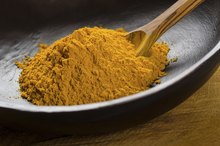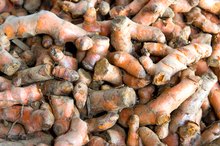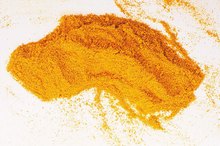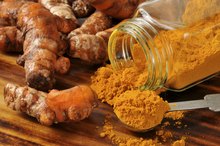What does fact checked mean?
At Healthfully, we strive to deliver objective content that is accurate and up-to-date. Our team periodically reviews articles in order to ensure content quality. The sources cited below consist of evidence from peer-reviewed journals, prominent medical organizations, academic associations, and government data.
- Surgical Neurology International: Natural Anti-Inflammatory Agents for Pain Relief
- Surgical Neurology International: Natural Anti-Inflammatory Agents for Pain Relief
The information contained on this site is for informational purposes only, and should not be used as a substitute for the advice of a professional health care provider. Please check with the appropriate physician regarding health questions and concerns. Although we strive to deliver accurate and up-to-date information, no guarantee to that effect is made.
How to Use Turmeric to Reduce Inflammation and Pain
Turmeric is commonly used as a spice in Indian cooking, especially in curry dishes 5. It's also played a role for over 4,000 years in traditional Asian medicine. A review article published in The Journal of Alternative and Complementary Medicine in 2003 noted that turmeric has a proven anti-inflammatory effect and is considered safe for consumption 45.
Turmeric and Inflammation
Including more turmeric in your diet could help limit inflammation in your body 5. Both histamine and cortisol help control inflammation in your body.
Turmeric and Pain Relief
Can Turmeric Cause Blood Sugar Levels to Drop?
Learn More
Some medications for pain relief have unwanted side effects, especially when used for a long time. Adding more anti-inflammatory foods and ingredients to your diet may help limit inflammation and thus pain due to inflammatory conditions, such as arthritis. A review article published in Surgical Neurology International in 2010suggested that using turmeric may help you decrease the amount of non-steroidal pain medication you take 35.
Side Effects and Safety
Turmeric is usually well tolerated, even in some doses higher than you would get in food, according to an article published in the British Journal of Nutrition in 2010 5. With high doses from supplements, you could develop ulcers, however, and long-term use could cause:
- an upset stomach
- gas
- nausea
- indigestion
- stomach pain
Some people are allergic to turmeric and could experience adverse reactions 5.
Use in Diet
How to Use Turmeric for Staph Infections
Learn More
For a side dish, mix turmeric with rice, raisins and cashews, or add it to sauteed vegetables, such as:
- cauliflower or a mix of green beans
- onions 5
You can also use turmeric to make your egg salad even more yellow and flavorful or in a curry dish for dinner 5. Some people like to drink a mix of milk or nondairy milk, turmeric, honey, cinnamon and ginger before bed 5.
Related Articles
References
- British Journal of Nutrition: Curcumin as a Therapeutic Agent: The Evidence From in Vitro, Animal and Human Studies
- Surgical Neurology International: Natural Anti-Inflammatory Agents for Pain Relief
- The Journal of Alternative and Complementary Medicine: Safety and Anti-Inflammatory Activity of Curcumin: A Component of Tumeric (Curcuma Longa)
- Drugs.com: Turmeric
- University of Maryland Medical Center: Turmeric
- American Cancer Society: Turmeric
- Hewlings SJ, Kalman DS. Curcumin: A Review of Its' Effects on Human Health. Foods. 2017;6(10)
Writer Bio
Based in Massachusetts, Jessica Bruso has been writing since 2008. She holds a master of science degree in food policy and applied nutrition and a bachelor of arts degree in international relations, both from Tufts University.









